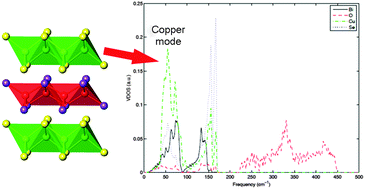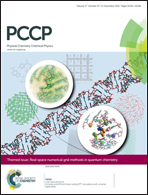The role of copper in the thermal conductivity of thermoelectric oxychalcogenides: do lone pairs matter?†
Abstract
Understanding the underlying mechanisms that suppress thermal conduction in solids is of paramount importance for the targeted design of materials for thermal management and thermoelectric energy conversion applications. Bismuth copper oxychalcogenides, BiOCuQ (Q = Se, Te), are highly crystalline thermoelectric materials with an unusually low lattice thermal conductivity of ∼0.5 Wm−1 K−1, a value normally found in amorphous materials. Here we unveil the origin of the unusual thermal transport properties of these phases. First principles calculations of the vibrational properties combined with analysis of in-situ neutron diffraction data, demonstrate that weak bonding of copper atoms within the structure leads to an unexpected vibrational mode at low frequencies, which is likely to be a major contributor to the low thermal conductivity of these materials. In addition, we show that anharmonicity and the large Grüneisen parameter in these oxychalcogenides are mainly related to the low frequency copper vibrations, rather than to the Bi3+ lone pairs.



 Please wait while we load your content...
Please wait while we load your content...